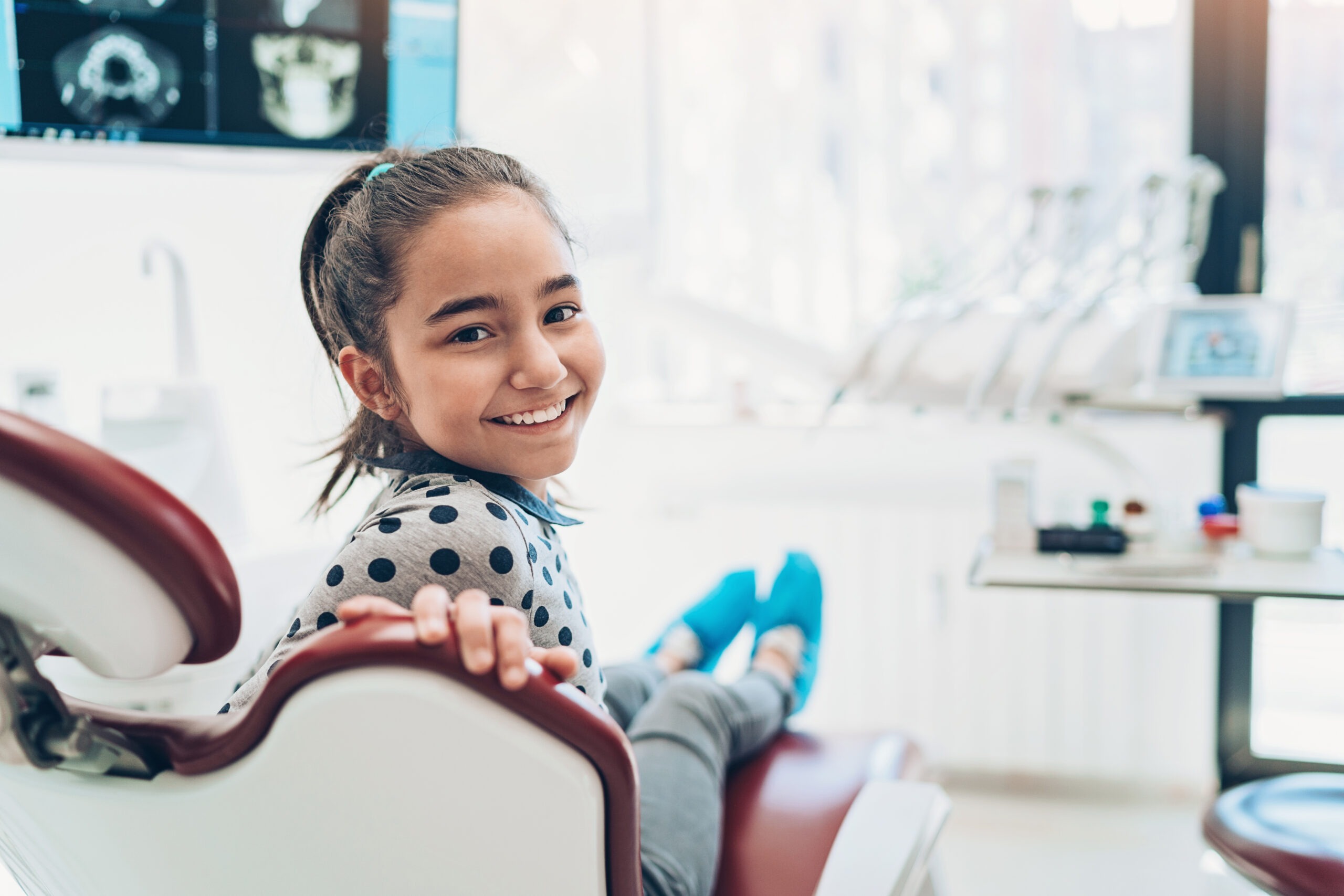As your trusted partners in orthodontic care, we are committed to informing you about the latest treatments and how they can benefit you or your loved ones. This month, our Champlain Orthodontics team wants to share a comprehensive approach to orthodontic care known as two-phase treatment. We invite you to continue reading to learn more about the process and the benefits of two-phase treatment.
Two-Phase Treatment
Understanding the two-phase treatment process is the first step in appreciating its benefits.
The first phase typically begins when a child has mainly primary or “baby” teeth. The goal during this phase is to help the jaw develop to accommodate all permanent teeth and improve how the upper and lower jaws fit together.
After completing the first phase, your child will have a resting period before starting phase two. They leave the mouth alone during this period as the remaining teeth erupt. A successful first phase will have created room for permanent teeth to find an eruption path. Otherwise, they may become impacted or severely displaced.
The second phase begins when all the permanent teeth have erupted. The goal of the second phase is to ensure each tooth has an exact location in the mouth where it is in harmony with the lips, cheeks, tongue, and other teeth. This phase is achieved by carefully applying braces or other orthodontic devices.
Two-Phase Treatment
Understanding the two-phase treatment process is the first step in appreciating its benefits.
The first phase typically begins when a child has mainly primary or “baby” teeth. The goal during this phase is to help the jaw develop to accommodate all permanent teeth and improve how the upper and lower jaws fit together.
After completing the first phase, your child will have a resting period before starting phase two. They leave the mouth alone during this period as the remaining teeth erupt. A successful first phase will have created room for permanent teeth to find an eruption path. Otherwise, they may become impacted or severely displaced.
The second phase begins when all the permanent teeth have erupted. The goal of the second phase is to ensure each tooth has an exact location in the mouth where it is in harmony with the lips, cheeks, tongue, and other teeth. This phase is achieved by carefully applying braces or other orthodontic devices.

The Benefits of Two-Phase Treatment
The two-phase treatment approach in orthodontics is designed to maximize the opportunity to accomplish the ideal healthy, functional, and aesthetic result that will remain stable throughout your life. This approach offers several key benefits, but today we’ll focus on some more common ones.
- Facial Cosmetics. One of the most significant benefits of two-phase treatment is the potential for improved facial symmetry and aesthetics. Orthodontists can guide jaw growth by initiating treatment at a younger age, leading to noticeable facial balance and harmony enhancements.
- Prevention of future dental issues. Early intervention can help prevent more severe problems requiring more invasive treatments, such as tooth extraction or surgery, later in life. It can correct oral habits that may be detrimental to the development of the teeth and jaws and can also guide the growth of the jaw to accommodate emerging teeth.
- Reduce the need for tooth extraction. By guiding the growth of the jaw during the first phase, there is often more room to accommodate the permanent teeth, reducing the likelihood of crowding and the need for extractions as part of the treatment process.
- Increased effectiveness of treatment. By taking advantage of the natural growth processes, orthodontists can influence jaw development more effectively during the first phase, leading to better results than if you postpone your child’s treatment.
- Shorter treatment time during the second phase. Because many of the significant corrections are made during the first phase when patients are still growing, the second phase can often be shorter than when compared to children who skip phase one. Think of phase two as simply putting the finishing touches on your child’s smile.
- Enhance your child’s self-esteem and confidence. By addressing orthodontic issues earlier, children can enjoy the benefits of a healthier and more attractive smile sooner, positively affecting their self-image and confidence. When your child likes what they see in the mirror, they will have an easier time forming friendships and connections.
It is important to remember that you and your child might experience additional benefits unique to your situation that are not listed here.
Concerns Regarding Two-Phase Treatment
As with any medical procedure, it’s natural for patients and parents to have concerns or misconceptions about two-phase treatment. Here are a few common concerns we hear from parents.
- Length of the treatment. While it’s true that two-phase treatment involves two distinct stages, it’s important to remember that these phases work with your child’s natural growth to make it effective, comfortable, and efficient. Because of this, the duration of treatment can be shorter, especially if your child can avoid invasive procedures. As mentioned earlier, two-phase treatment might even decrease your child’s time spent in braces.
- Cost. Unfortunately, many believe that two phases mean treatment is twice as expensive. Fortunately, it’s not true! Though there may be appointments over the years, the overall cost of treatment is usually much more budget-friendly than if you attempted to do all your child’s orthodontic treatment at once when they were older. Early intervention can prevent more complex and potentially more expensive treatment later on, such as surgery or tooth pulling. In addition, having the cost spread out can make payments more manageable.
- Age. Sometimes, parents or guardians feel their child is too young to receive an examination, let alone start orthodontic care! However, the American Association of Orthodontists recommends that children have their first check-up with an orthodontist no later than age seven. This young age allows orthodontists like Dr. Eaton and Dr. Ryan to determine if and when a child might need treatment. Early assessments also enable them to catch potential problems before they become more serious.
If you have any additional concerns or questions, we at Champlain Orthodontics are always here to help.
Begin Two-Phase Treatment With Champlain Orthodontics Today!
At Champlain Orthodontics, we believe every patient deserves a beautiful, healthy smile that will last a lifetime, and two-phase treatment can often be a crucial part of achieving that goal. The benefits of two-phase treatment are significant, from improved facial symmetry and prevention of future dental issues to potentially shorter treatment times and enhanced self-esteem for the patient.
If you’re considering orthodontic treatment for yourself or your child, we invite you to contact us to schedule a complimentary consultation. We look forward to helping you and your loved ones on your journey to a healthier, more confident smile.
 Free Consult
Free Consult

